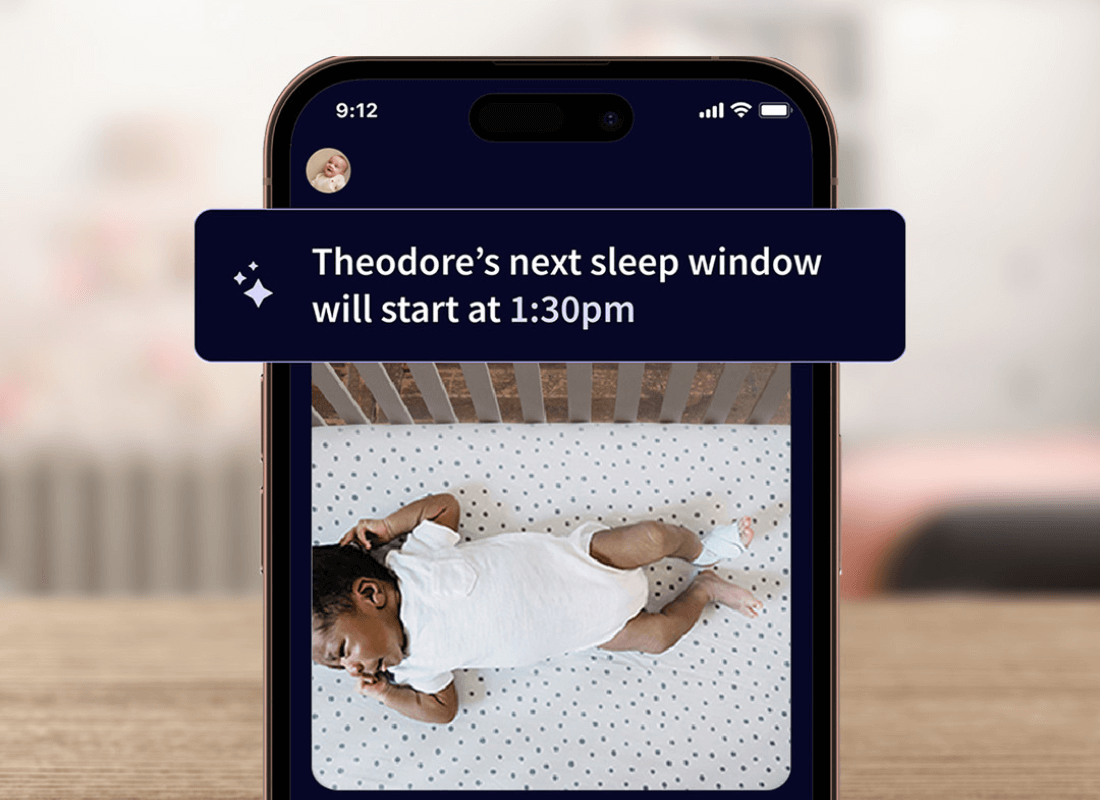
Dream Sock®: What is Predictive Sleep and How Does It Work?
|
Time to read 4 min
|
Time to read 4 min
Understanding your baby’s sleep needs can feel overwhelming, especially in the early months when nap patterns are inconsistent and overtiredness builds quickly. It’s not always easy to recognise when your baby is ready for sleep or how long they should be awake.
Predictive Sleep Technology helps ease that uncertainty by providing personalised sleep guidance based on your baby’s own sleep patterns—supporting better rest for your baby and greater confidence for you.
Predictive Sleep is available through the Owlet® Dream App and works with Dream Sock®. It tracks your baby’s sleep and wake windows and recommends the ideal time for their next rest. It takes into account factors like your baby’s age and previous nap length, helping you confidently identify when your baby is ready for sleep.
Traditional wake window charts can serve as general references, but they don’t reflect the unique needs of each baby. Predictive Sleep stands apart by offering tailored sleep window suggestions based on real-time data collected through Dream Sock®. As your baby grows and develops, the technology adapts accordingly—offering support through changing sleep patterns, developmental leaps, regressions, illness, and the everyday ups and downs.
Sleep sessions are automatically recorded, and Dream Sock® also tracks important Sleep Quality Indicators, including pulse rate, oxygen level, movement, and wakings. This data gives parents a more complete understanding of how well their baby is sleeping and provides the insight needed to make informed adjustments to nap or bedtime routines.
While Predictive Sleep offers personalised recommendations grounded in real data and best practices, it’s still helpful to observe your baby’s cues. These two sources of insight—technology and instinct—work best together to support healthy, responsive sleep habits.
Every baby is different. Even babies of the same age can have completely different sleep patterns, wake windows, and cues. Factors such as teething, illness, or even changes in routine can all affect sleep quality and timing. Predictive Sleep is designed to account for this variability, offering support that reflects your baby’s real needs rather than a one-size-fits-all schedule.
It uses neuro-protective sleep science and behavioural sleep intervention practices, rooted in the principle of sleep-wake homeostasis. This natural process describes how the body builds up a need for sleep, also known as "sleep pressure", the longer we are awake. Once that pressure reaches a tipping point, sleep naturally follows. For babies, this pressure builds much more quickly than in adults, making regular naps essential for healthy development. Predictive Sleep identifies when that pressure is likely to be high enough for your baby to fall asleep more easily and stay asleep longer—helping reduce overtiredness and support more restorative sleep.
While Predictive Sleep is available through Dream Sock®, parents can also visually and audibly monitor their baby using Dream Sight™. Streaming HD video directly to the Owlet® Dream App, Dream Sight™ enables you to check in on your baby at any time, from anywhere.
It includes advanced features like sound and motion detection with smart alerts, plus short video clips that show what happened just before your baby began to stir, cry, or move. Night vision, two-way talk, and environmental tracking (temperature and humidity) are also included—offering a more complete picture of your baby’s sleep environment and behaviours.
When combined with the Dream Sock®, Dream Sight™ forms Dream Duo™. This provides parents with the best of both worlds—smart, connected sleep monitoring that offers unmatched convenience and insight. Whether you're tracking sleep quality or keeping a visual eye on your baby, Dream Duo™ ensures you're always in the know, helping you feel confident about your baby's rest, no matter where you are.
As your baby grows, their sleep patterns and needs shift. Predictive Sleep grows with them—offering fresh, personalised guidance through each stage. Whether your baby is dropping from three naps to two, going through a sleep regression, or adjusting to teething, Predictive Sleep continues to provide reliable insights.
Within the Owlet® Dream App's Routine tab, you can view all sleep sessions logged through Dream Sock®, track daily totals, and access a weekly summary of sleep duration. This makes it easier to spot patterns, monitor progress, and refine routines as needed.
Predictive Sleep Technology takes the pressure off parents to become sleep experts. By automatically tracking data, identifying trends, and offering science-backed recommendations, it creates a more predictable and restful sleep experience for both babies and parents.
With tools like Dream Sock®, Dream Sight™, and the Owlet® Dream App working together, Owlet offers families a smarter, more connected way to support sleep for your little one.
Disclaimer: This blog is for informational purposes only and does not constitute medical advice. Always consult your physician or other qualified healthcare provider with any questions you may have regarding a medical condition or the health and well-being of your child.
Dream Sock and Dream Duo are not a substitute for adult supervision or safe sleep practices.. Do not rely solely on the notifications to determine if the baby is safe. Dream Sock does not notify at every unexpected occurrence of an elevated or depressed Pulse Rate or a low Oxygen Saturation level. Dream Sock notifications are intended to identify instances when the baby’s Pulse Rate and/or Oxygen Saturation level moves outside a preset range and are provided only when sufficient data are available for analysis. You should seek medical attention if the baby is not feeling well even if the reading is normal.

